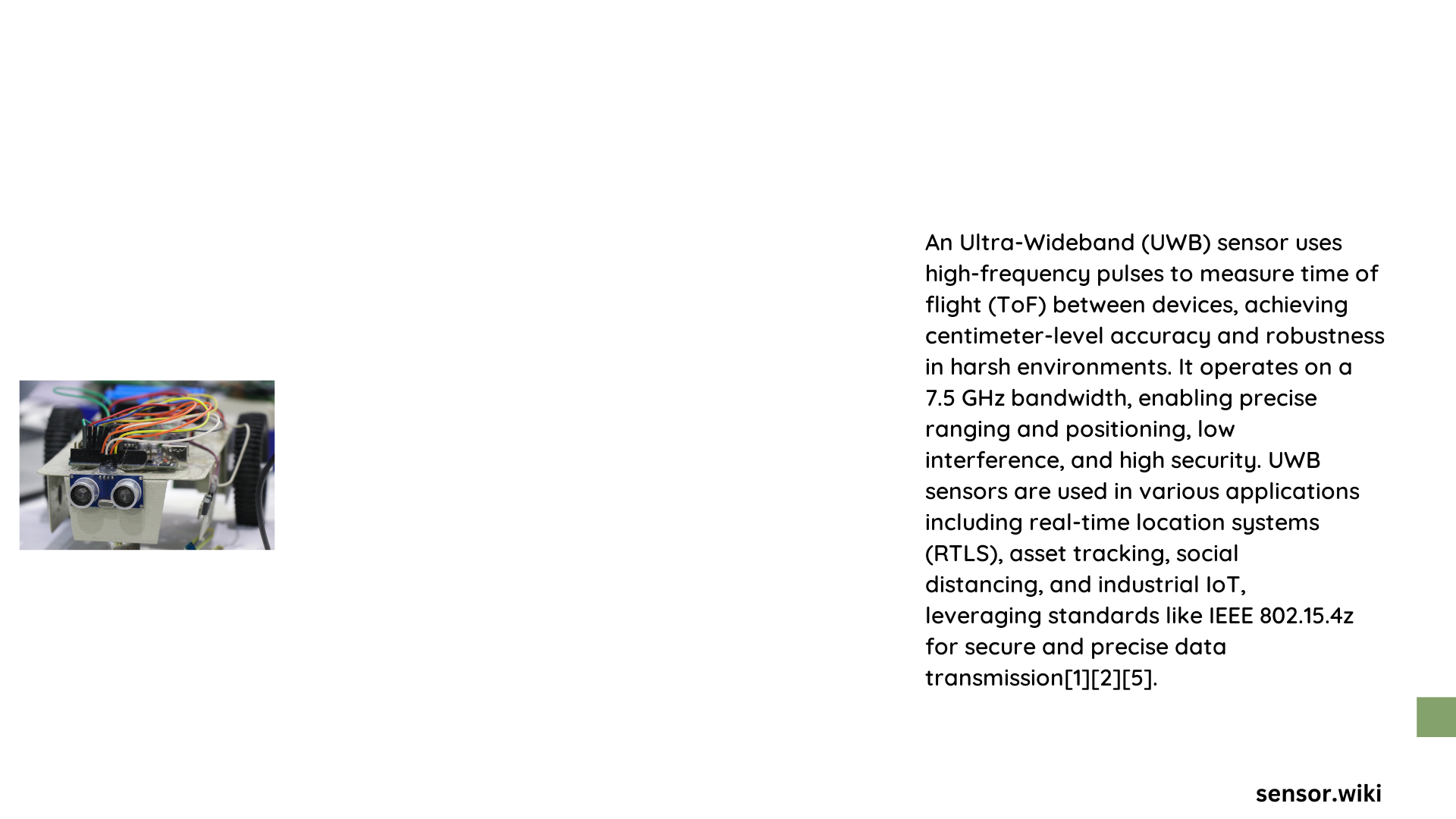Ultra wideband (UWB) sensors represent a cutting-edge wireless technology that enables precise location tracking and communication through high-bandwidth, short-pulse radio waves. Operating across a wide frequency spectrum between 3.1 GHz to 10.6 GHz, these sensors provide centimeter-level accuracy, low power consumption, and robust performance in complex environments, making them revolutionary for indoor positioning, asset tracking, and emerging technological applications.
What Makes Ultra Wideband UWB Sensors Unique?
How Do UWB Sensors Operate?
UWB sensors utilize sophisticated signal transmission techniques that differentiate them from traditional wireless technologies:
- Frequency Range: 3.1 GHz to 10.6 GHz bandwidth
- Pulse Duration: Extremely short nanosecond-level pulses
- Signal Characteristics: Low power, wide spectrum transmission
What Are the Key Technical Specifications?
| Parameter | Specification |
|---|---|
| Bandwidth | Up to 7.5 GHz |
| Power Consumption | 2-5 milliwatts |
| Accuracy | ±10 centimeters |
| Maximum Range | 200 meters |
What Technical Advantages Exist?
UWB sensors offer remarkable technical advantages:
- Precise Localization: Centimeter-level tracking accuracy
- Low Interference: Minimal signal disruption
- Energy Efficiency: Extremely low power requirements
- High Data Transfer Rates: Rapid information transmission
Where Are UWB Sensors Primarily Applied?
Industrial Tracking Solutions
UWB sensors excel in complex industrial environments, providing:
– Real-time asset monitoring
– Personnel tracking
– Equipment management
– Inventory control systems
Automotive Safety Applications
In automotive technology, UWB sensors support:
– Collision avoidance systems
– Precise parking assistance
– Vehicle access control
– In-car passenger detection
Healthcare and Medical Tracking
Medical facilities utilize UWB sensors for:
– Patient movement tracking
– Medical equipment localization
– Environmental monitoring
– Contact tracing capabilities
How Do UWB Sensors Achieve High Precision?
UWB sensors leverage advanced technologies like:
– Time of Flight (ToF) measurement
– Advanced signal processing algorithms
– Multi-path signal filtering
– Sophisticated synchronization techniques
What Challenges Exist in UWB Sensor Implementation?
Potential implementation challenges include:
– Complex calibration requirements
– Environmental signal interference
– Initial system configuration complexity
– Regulatory compliance across different regions
Future Technological Developments
Emerging trends in UWB sensor technology suggest:
– Enhanced miniaturization
– Improved energy efficiency
– More sophisticated signal processing
– Broader integration with IoT ecosystems
Conclusion

Ultra wideband UWB sensors represent a transformative technology with extensive applications across multiple domains, offering unprecedented precision, efficiency, and reliability in wireless tracking and communication systems.
